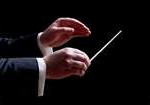A series looking at the art of the choral conductor.
What exactly is the job of a choral conductor ? There are quite a few things a choral conductor needs to do: make sure the group are in tune, singing rhythmically accurately, have the correct vowel shapes, are pronouncing the text correctly, are balanced between the voice-parts, observe phrases and dynamics, and so forth.
 But then there’s something more; and this is where the job starts to become really interesting. Once the ensemble is working as a unit, the conductor starts to craft the performance of a piece – the point at which the music lifts off the page and becomes a real experience.
But then there’s something more; and this is where the job starts to become really interesting. Once the ensemble is working as a unit, the conductor starts to craft the performance of a piece – the point at which the music lifts off the page and becomes a real experience.
It’s hard to define exactly when this moment occurs; usually, you find that you haven’t noticed when it happened, and you suddenly realise that both you and the choir have left the printed score far behind and are moving into new territory. It usually occurs at the point when both the conductor and the choir are really no longer referring to the score any more: all the tempi, dynamics, the phrases and articulation are all ingrained, and all these different elements have been combined into the piece in a manner that has become instinctive.
The most obvious sign that this point has been reached is when both you and the choir are moving and breathing as one; you trust the choir to produce the sound, and they trust you to guide the performance.
This allows a marvellous freedom and adaptability into the performance now: you start to explore new things together with each performance. Some performance spaces require greater time to be taken at the ends of phrases in order to allow the reverberation to recede sufficiently before beginning the next phrase; some spaces seem to ask for a fuller sound, some more intimate spaces need a smaller sound; some performances become so engrossing that you dwell on a pause or on the silence at the end of a piece for just that little bit longer, to allow the full implication of the chord or phrase you have just sung to sink in before moving on. Sometimes a colour occurs in the sound that is new, engendered by the environment or the mood that day.
Sometimes (and these are the best times), you all just can’t help yourselves – the choir seem to be able to give more than they ever have before, you find you’re now cajoling more from them than you have asked for in rehearsal; you are all moved to greater emotional depth than before, or you find a dance-rhythm has just that little bit more lift and energy. It’s unpredictable; you can’t tell when it’s going to happen, you just have to be confident in each other enough to know that, if it does occur, you’ll all go with it together.
It’s difficult as a conductor because, of course, you’re the only one who’s unable to make a sound. So what can you use to communicate your intent ?
That’s for the next post.
